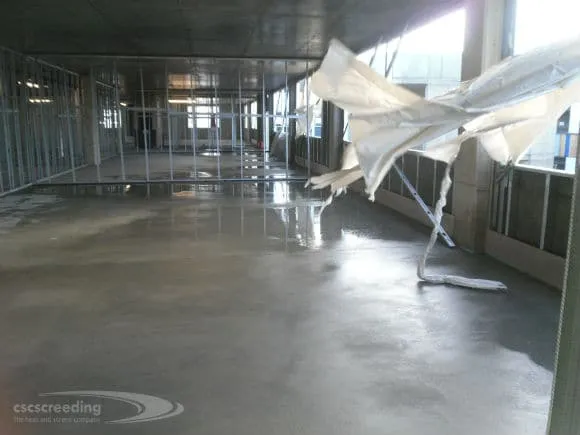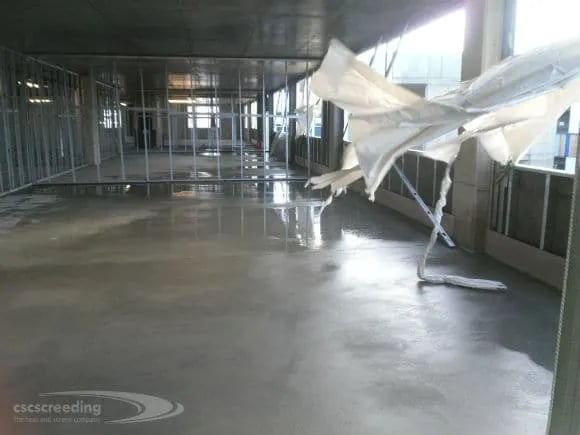
April Showers in May? Laying Screed in Cold and Wet Weather

And you want your screed dried by when?
There are three major problems when installing screeds in cold weather:
- they can freeze before developing strength, which may lead to screed failure;
- they set more slowly, extending the curing and drying time;
- high relative humidity and rain water may irreversibly impact the quality of the screed.
Protecting and drying the screed properly even in adverse weather conditions is critical to get a solid, durable floor.
Below are a few essential factors that may affect your screeded floor.
Moisture
Protecting sand, cement, and admixtures from excessive moisture and rain is very important.
- If the moisture content in screed mixtures is too high, the quality of screed will be affected, leading to inadequate consistency, poor surface regularity, and high departure from datum.
- When installing screeds during wet or cold weather, ensure temporary protection is in place. Water sitting on the screed surface during installation will affect workability, surface strength and leave a friable dusty unsuitable finish.
- If the sand has been left in the rain and is too wet prior to mixing screed, then the appropriate consistency may not be achieved and could delay the works.
- Sand, cement, and admixtures should be covered with tarpaulin, canvas, or waterproof sheets during transport and storage.
- Special care must be taken when handling cement. Once cement comes in contact with water, it undergoes hydration, which will negatively affect its quality.
Temperature
To prevent screeds from freezing, screeders must ensure that the floor and air temperatures do not drop below 5°C and 3°C, respectively.
- Maintaining these temperatures for five consecutive days will allow the screed to set and develop strength.
- Furthermore, frozen sand should be thawed prior to use or protected by way of hessian blankets, cement should be acclimatized above 5C, and admixtures must be protected from freezing or they will have to be discarded This will ensure that the chemical reactions necessary for the screed to set, develop strength, and dry will take place.
- To prevent screeds from being affected by cold weather, it is advised that a low heat should be maintained and the area sealed from the elements.
If you have any doubts about whether or not the screed has dried properly and developed the required strength, specialists can complete a series of tests to verify the screed’s ability to perform as planned.
Are you looking for a team of experienced screeders capable of avoiding screed problems and keep projects moving even in the winter? If so, contact us or call our BuilderScreed number 0845 500 4055 to tell us more about your project and get a free, no-obligation quote.
To find out more about getting the perfect screed for your project, download our free guide “6 steps to getting a perfect screed and underfloor heating system”
BuilderScreed is a division of CSC Screeding Ltd
